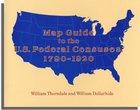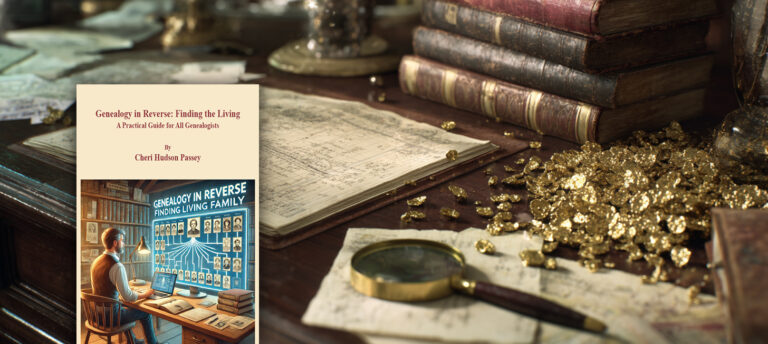
Map Guide to the Federal Censuses—Still the Best Source for Boundary Changes
The award-winning Map Guide to the U.S. Federal Censuses, 1790-1920, by William Thorndale and William Dollarhide, published in 1987, is the preeminent tool for assuring researchers that they are searching the census in the correct county. The maps in the Map Guide show both contemporary boundaries and decennial federal census boundaries on the same map. According to co-author William Dollarhide, “That concept was clearly designed to aid genealogists, not just historians, or demographers. Genealogists are interested in what county their people lived in so they can find the right county courthouse. As you know, the most important part of the three elements in doing genealogical research (Name, Date, Place) is the PLACE where the records are stored today. The Map Guide maps provide that service, by showing both the modern boundaries and the contemporary boundaries on the same map. One can quickly see the counties THEN and the counties NOW. It is graphic, it is easy, and it is consistent for every state . . . As a testament to [William] Thorndale’s research, there has never been one question about the accuracy of the Map Guide maps . . . .”.
The principal feature of The Map Guide consists of a county-by-county map for each U.S. state (including territorial maps) for each census of the state/territory’s existence. Each such map displays contemporary boundaries overlaying the boundaries of a particular census year. Users of the volume will also discover a detailed introduction containing an historical essay about the census, an appendix describing the mapping process, and a discussion of state session laws that mandated the thousands of boundary changes.
According to esteemed genealogist Elizabeth Shown Mills:
“Ancestors who lived to a ripe old age on the frontiers of America may have spent their entire lives in one community and yet lived in a dozen different counties. My first step with any new project is to create a genealogy of the area in which the ancestor lived—charting its parent counties and its offspring—and I begin that effort with Dollarhide and Thorndale’s Map Guide to the U.S. Federal Census, 1790-1920.”
To further illustrate, here are two maps from the Thorndale/Dollarhide volume: (1) A guide for using the book, and (2) the 1890 map for the Montana Territory.




